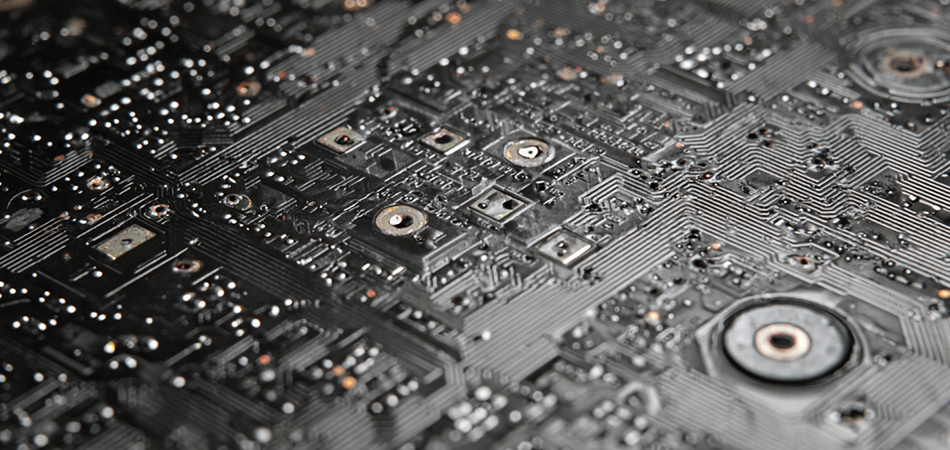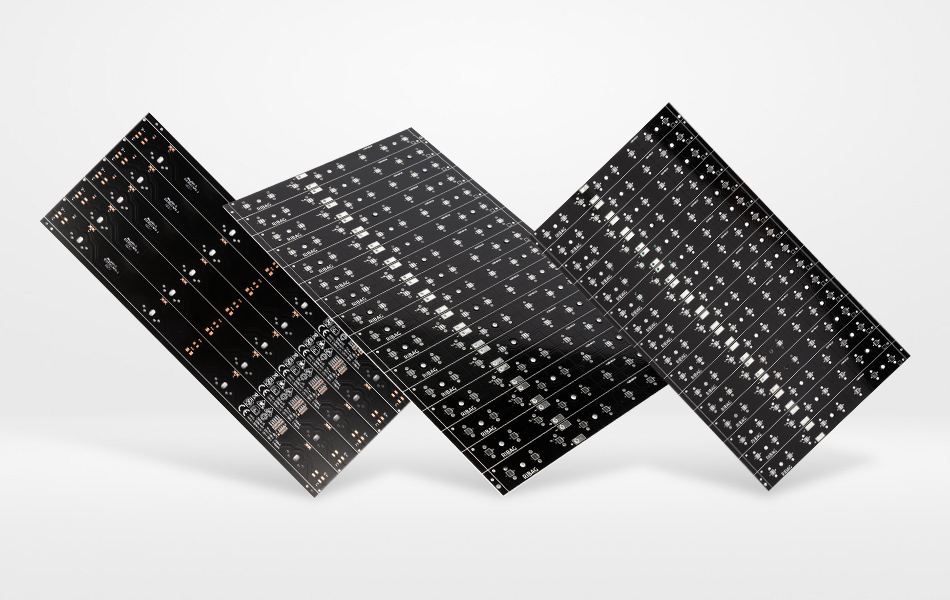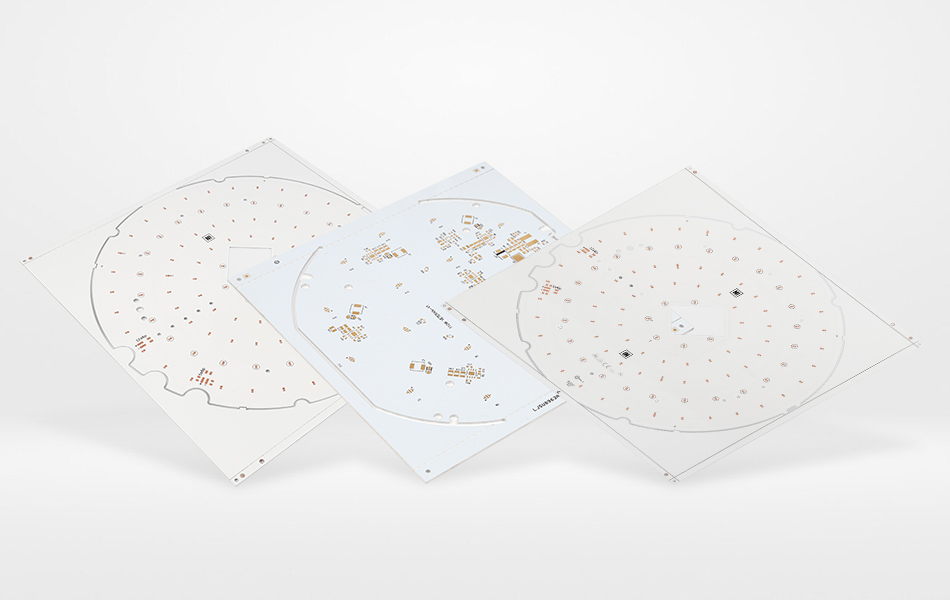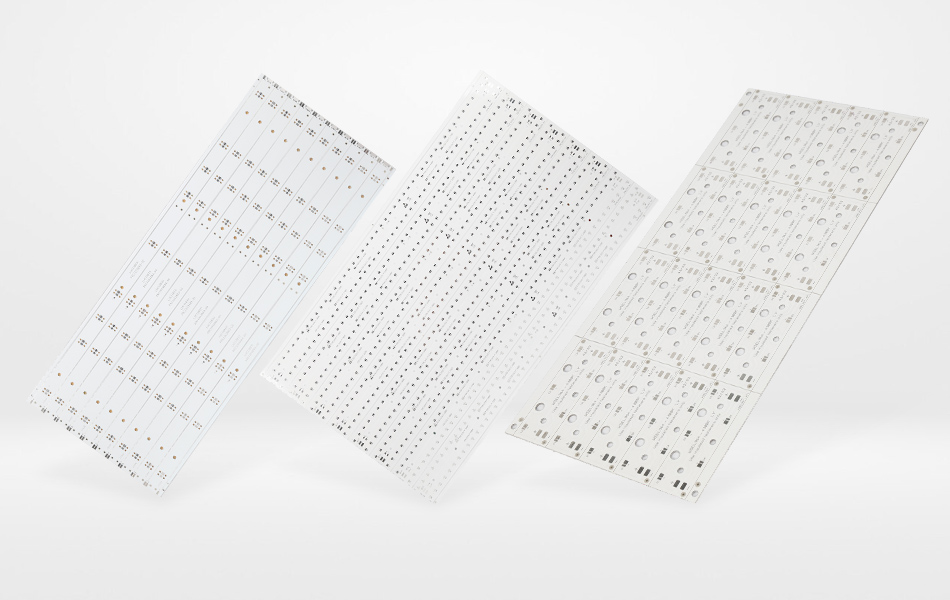-
- PCB TYPE
- PRINTED CIRCUIT BOARD PROTOTYPE ALUMINUM PRINTED CIRCUIT BOARD R&F PCB FPC HIGH FREQUENCY PCB HIGH-TG PCB HEAVY COPPER PCB HDI PCB PCB FOR LIGHTING METAL CORE PCB
time:Jun 24. 2025, 09:19:11
In the rapidly evolving electronics industry, Printed Circuit Boards (PCBs) are vital for electronic devices. Among various PCB types, aluminum PCBs stand out as a revolutionary solution. As consumers demand smaller, more powerful, and energy - efficient electronics, traditional PCBs often fail to meet the strict requirements for heat management, mechanical stability, and complex electrical designs. Aluminum PCBs, with their unique properties, have become indispensable across industries, from consumer electronics to aerospace. This article explores their structure, advantages, design considerations, manufacturing processes, applications, and market trends.
Structure of Aluminum PCBs
Layered Architecture
Aluminum PCBs feature a multi - layer structure. The aluminum substrate at the core provides mechanical support and efficiently dissipates heat, ensuring components operate within optimal temperatures. Above it, the dielectric layer acts as an electrical insulator between the copper traces and the aluminum base. Made from specialized polymers, often with thermally conductive fillers, it balances electrical insulation and heat transfer. Polyimide is a common choice due to its high thermal stability and good electrical insulation. The outermost copper traces, made of high - conductivity copper, form the electrical circuits. Their design must consider the substrate and dielectric layer to ensure reliable signal transmission.
Material Selection
Material choice for each layer is crucial. For the aluminum substrate, different alloys are selected based on application needs. Alloys with high thermal conductivity are preferred for efficient heat dissipation, while those with enhanced mechanical strength and corrosion resistance suit harsh environments like automotive or aerospace. The dielectric layer often uses polyimide - based materials, with ceramics such as aluminum oxide added as fillers to improve thermal conductivity. For copper traces, high - purity copper is used, and its thickness is determined by the circuit's current - carrying capacity, balancing performance, cost, and weight.

Advantages of Aluminum PCBs
Exceptional Heat Dissipation
Aluminum PCBs excel in heat dissipation, a critical advantage for modern electronics. Components like high - power transistors, LEDs, and advanced ICs generate significant heat. The aluminum substrate, with its high thermal conductivity, quickly absorbs and distributes this heat, preventing performance degradation and component failure. In high - power LED lighting, for example, aluminum PCBs ensure consistent brightness and a longer lifespan by effectively managing heat.
Mechanical Robustness
They offer superior mechanical strength compared to many other PCBs. The aluminum substrate provides a rigid foundation, making the PCB resistant to bending, vibration, and shock. In the automotive industry, where PCBs face continuous vibrations and temperature changes, aluminum PCBs maintain stability, reducing electrical failures and maintenance needs. Similarly, in industrial machinery, their robustness ensures long - term, reliable operation.
Cost - Effectiveness in the Long Run
Although initially more expensive, aluminum PCBs offer long - term cost savings. Their excellent heat dissipation reduces the need for additional cooling components like large heat sinks or fans, cutting costs and reducing device size. This is especially beneficial in aerospace and portable electronics, where space and weight are critical. Moreover, the enhanced reliability and longer component lifespan due to effective heat management lower maintenance and replacement costs. In industrial automation, where downtime means production losses, aluminum PCBs minimize disruptions and save on productivity - related expenses.
Environmental Friendliness
Aluminum is highly recyclable, making aluminum PCBs an eco - friendly option. At the end of a product's life cycle, the aluminum substrate can be easily recycled, reducing electronic waste. Recycling aluminum also consumes less energy than producing new aluminum, lowering energy use and greenhouse gas emissions. Additionally, the efficient heat dissipation of these PCBs enables electronic devices to operate more efficiently, reducing energy consumption and further benefiting the environment and end - users.

Design Considerations for Aluminum PCBs
Thermal Design
Component Placement
Proper component placement is key for thermal design. Heat - generating components should be positioned to maximize heat transfer to the aluminum substrate, preferably over the substrate or near thermal vias. Grouping components by heat - generation levels and separating heat - sensitive ones helps evenly distribute heat. In a power supply unit, high - power transistors and diodes are placed close to the substrate or vias to prevent hotspots and ensure safe operation.
Thermal Via Design
Thermal vias are essential for heat transfer but require careful design. Larger vias can carry more heat but take up more space, affecting circuit layout. The number and distribution of vias depend on component heat - generation and overall thermal needs. Advanced thermal simulation tools analyze heat flow and optimize via design, helping designers balance heat - transfer capacity and space utilization.
Heat - Sink Integration
For high - power components or environments with insufficient natural convection, integrating heat sinks can enhance heat dissipation. Good thermal contact between the heat sink and the aluminum substrate is crucial, often achieved with thermal interface materials like paste or pads. The heat - sink design, including size, shape, and fin configuration, must match the PCB's heat - dissipation requirements while considering its impact on device size, weight, cost, and compatibility with the PCB's design.
Electrical Design
Trace Routing
Trace routing in aluminum PCBs is complex due to factors like signal integrity, impedance matching, and crosstalk. The aluminum substrate can influence electromagnetic fields around copper traces. To maintain signal integrity, designers optimize trace widths, lengths, and spacings, especially for high - speed signals. Specialized PCB design software with simulation capabilities analyzes trace behavior and helps avoid signal degradation and interference.Power and Ground Plane Design
Power and ground plane design is vital for stable power distribution and EMI reduction. Well - designed planes provide a low - impedance path for power and ground signals. Techniques like splitting planes and adding decoupling capacitors near component power pins minimize voltage drops and filter out high - frequency noise. Proper grounding, such as single - point or star - grounding, ensures EMC compliance and improves overall electrical performance.
Design for Manufacturability
Adhering to design - for - manufacturability (DFM) principles simplifies aluminum PCB production. Using standard component footprints makes component sourcing easier and reduces assembly errors. Avoiding complex shapes and geometries streamlines manufacturing, reduces defects, and eases fabrication. Ensuring design compatibility with processes like drilling, plating, and circuit patterning minimizes rework. Clear design guidelines help the manufacturing team produce accurate and consistent PCBs.

Manufacturing Processes of Aluminum PCBs
Material Preparation
The manufacturing process starts with careful material preparation. High - quality aluminum sheets are selected based on thickness, alloy type, and surface finish, then cut to the required size. Dielectric materials, either pre - impregnated films or liquid resins, are prepared. Films have a base polymer impregnated with thermosetting resin and fillers, while liquid resins require precise mixing of components. High - purity copper foils are prepared to the right thickness and may be treated to improve adhesion to the dielectric layer.
Lamination
Lamination bonds the aluminum substrate, dielectric layer, and copper foils using heat and pressure in a laminator. Heat cures the thermosetting resin in the dielectric layer, while pressure ensures intimate layer contact, eliminating air gaps. Precise control of temperature, pressure, and time is necessary to avoid defects like delamination or incomplete curing. Advanced laminators with real - time parameter control ensure consistent results.
Drilling and Plating
After lamination, drilling creates holes for vias, component mounting, and electrical connections. High - precision drilling machines with specialized bits ensure accurate hole placement and clean walls, protecting the PCB layers. Electroplating then deposits copper on the hole walls and trace surfaces, creating electrical connections and a solderable surface. The plating process controls copper thickness for proper conductivity and strength.
Circuit Patterning
Photolithography is commonly used for circuit patterning. A photosensitive resist is applied to the copper surface, exposed to UV light through a patterned mask, and developed. Exposed resist areas become soluble, and the underlying copper is etched away, leaving the desired circuit pattern. High precision is required to ensure accurate trace dimensions and avoid shorts or open circuits, achieved with advanced photolithography techniques.

Applications of Aluminum PCBs
LED Lighting
Aluminum PCBs are ideal for LED lighting. LEDs generate significant heat, and these PCBs efficiently manage it, maintaining LED brightness and lifespan. Their mechanical strength suits various lighting fixtures, including outdoor and industrial ones. The use of aluminum PCBs also enables more compact and lightweight LED designs, suitable for both indoor and outdoor applications.
Power Electronics
In power electronics, such as power supplies, inverters, and motor drives, high - power components produce a lot of heat. Aluminum PCBs handle high currents and dissipate heat effectively, improving system efficiency. They reduce the need for large heat sinks, making devices smaller and lighter, which is crucial in space - constrained applications like automotive electronics and portable power supplies. Their robustness also makes them suitable for harsh industrial environments.
Automotive Electronics
The automotive industry increasingly adopts aluminum PCBs. Modern vehicles have numerous electronic systems, including engine control units, ADAS, infotainment, and battery management. These systems need PCBs that can withstand the harsh automotive environment. Aluminum PCBs meet these requirements with their heat - dissipation, mechanical strength, and EMI - shielding properties, ensuring reliable operation and contributing to vehicle safety and performance. They also enable more compact designs, beneficial for vehicle efficiency.
Telecommunications
In telecommunications equipment like base stations, routers, and switches, aluminum PCBs are used to manage heat from high - power components. Effective heat dissipation ensures stable signal transmission. Their mechanical strength allows them to withstand the rugged deployment environments of telecommunications equipment, reducing maintenance. Additionally, their EMI - shielding properties improve equipment performance and signal quality by minimizing interference between components.
Consumer Electronics
Consumer electronics, including smartphones, tablets, laptops, and gaming consoles, benefit from aluminum PCBs. As these devices become more powerful and compact, efficient heat management is crucial. Aluminum PCBs prevent overheating, which can degrade performance and reduce battery life. They enable innovative and sleek designs by reducing the need for large heat - dissipation components. Their lightweight nature also improves the portability of portable consumer electronics.

Market Dynamics of Aluminum PCBs
Market Growth
The market is growing due to high - performance electronics demand in various industries. Emerging technologies like IoT, 5G, and AI also drive growth, as well as miniaturization and complex device trends.
Competitive Landscape
The market is competitive, with manufacturers investing in R&D. Differentiation strategies include quality products, customization, and good service, leading to more innovation.
Challenges
Challenges include high raw material costs, lack of industry standards, and technical difficulties in ensuring long - term reliability. Meeting diverse industry requirements is also a hurdle.
Future Trends
Future focus will be on advanced materials, integration with new technologies, miniaturization, and sustainable manufacturing to reduce environmental impact.
Conclusion
Aluminum PCBs combine flexibility, thermal management, and durability, transforming the electronics industry. Despite challenges, growth opportunities are vast, and they will play a key role in future electronic device development.

Got project ready to assembly? Contact us: info@apollopcb.com



We're not around but we still want to hear from you! Leave us a note:

Leave Message to APOLLOPCB
